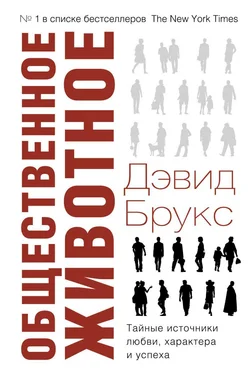Dean H. Hamer and Peter Copeland, Living with Our Genes: Why They Matter More Than You Think (New York: Anchor Books, 1999), 217.
Richard W. Nisbett, Intelligence and How to Get It: Why Schools and Cultures Count (New York: W W Norton & Co., Inc., 2009), 41.
Bruce E. Wexler, Brain and Culture: Neurobiology, Ideology, and Social Change (Cambridge, MA: MIT Press, 2006), 68.
Nisbett, 44.
James R. Flynn, What Is Intelligence?: Beyond the Flynn Effect (Cambridge: Cambridge University Press, 2007), 19.
David G. Myers, Intuition: Its Powers and Perils (New Haven, CT: Yale University Press, 2002), 35.
Richard К. Wagner, «Practical Intelligence,» in Handbook of Intelligence, ed. Robert J. Sternberg (Cambridge: Cambridge University Press, 2000), 382.
John D. Mayer, Peter Salovey and David Caruso, «Models of Emotional Intelligence,» in Handbook of Intelligence, ed. Robert J. Sternberg (Cambridge: Cambridge University Press, 2000), 403.
Nisbett, 18.
Daniel Goleman, «75 Years Later, Study Still Tracking Geniuses,» New York Times, March 7, 1995, and Richard C. Paddock, «The Secret IQ Diaries,» Los Angeles Times, July 30, 1995.
Malcolm Gladwell, Outliers: The Story of Success (New York: Little, Brown & Co., 2008) 81-83 (рус. изд. - Малкольм Гладуэлл. Гении и аутсайдеры. Почему одним все, а другим ничего? М.: Манн, Иванов и Фербер, 2013).
John Tierney, «Smart Doesn’t Equal Rich,» New York Times, April 25, 2007.
Keith E. Stanovich, What Intelligence Tests Miss: The Psychology of Rational Thought (New Haven, CT: Yale University Press, 2009), 31-32.
Jonah Lehrer, «Breaking Things Down to Particles Blinds Scientists to Big Picture,» Wired, April 19, 2010.
Stanovich, 34-35.
Stanovich, 60.
James J. Heckman and Yona Rubinstein, «The Importance of Noncognitive Skills: Lessons from the GED Testing Program,» in American Economic Review 91, no. 2 (May 2001): 145-49.
Robert Scott Root-Bernstein and Michele Root-Bernstein, Sparks of Genius: The Thirteen Thinking Tools of the World's Most Creative People (New York: First Mariner Books, 2001), 3.
Root-Bernstein and Root-Bernstein, 53-54.
Root-Bernstein and Root-Bernstein, 196.
«6 Ways Supermarkets Trick You to Spend More Money,» Shine, March 1, 2010.
Martin Lindstrom and Paco Underhill, Buyology: Truth and Lies About Why We Buy (New York: Doubleday, 2008), 148-49.
Joseph T. Hallinan, Why We Make Mistakes: How We Look Without Seeing, Forget Things in Seconds, and Are All Pretty Sure We Are Way Above Average (New York: Broadway Books, 2009), 92-93.
Расо Underhill, Call of the Mall: The Geography of Shopping by the Author of Why We Buy (New York: Simon & Schuster, 2004), 49-50.
Timothy D. Wilson, Strangers to Ourselves (Cambridge, MA: Belknap Press, 2002), 103.
Richard H. Thaler and Cass R. Sunstein, Nudge: Improving Decisions About Health, Wealth, and Happiness (Ann Arbor, MI: Caravan Books, 2008), 64.
Hallinan, 99.
David Brooks, «Castle in a Box,» The New Yorker, March 26, 2001.
Steven E. Landsburg, «The Theory of the Leisure Class,» Slate, March 9, 2007.
John Medina, Brain Rules: 12 Principles for Surviving and Thriving at Work, Home, and School (Seattle, WA: Pear Press, 2008), 163.
Jonah Lehrer, «The Truth about Grit,» Boston Globe, August 2, 2009.
Richard Bronk, The Romantic Economist: Imagination in Economics (Cambridge: Cambridge University Press, 2009), 17.
Predictably Irrational: The Hidden Forces That Shape Our Decisions (New York: HarperCollins, 2008), 243 (рус. изд. - Дэн Ариели. Поведенческая экономика. Почему люди ведут себя иррационально и как заработать на этом. М.: Манн, Иванов и Фербер, 2012).
Anemona Hartocollis, «Calorie Postings Don’t Change Habits, Study Finds,» New York Times, October 6. 2009.
Ariely, 170-71.
John A. Bargh, «Bypassing the Will; Toward Demystifying the Nonconcious Control of Social Behavior,» in The New Unconscious, eds. Ran R. Hassin, James S. Uleman, and John A. Bargh (Oxford: Oxford University Press), 40.
Claude M. Steele, «Thin Ice: Stereotype Threat and Black College Students,» The Atlantic, August 1999.
Margaret Shih, Todd L. Pittinsky, and Nalini Ambady, «Stereotype Susceptibility: Identity Salience and Shifts in Quantitative Performance, Psychological Science 10, no. 1 (January 1999): 80-83.
Hallinan, 102.
Robert E. Omstein, Multimind: A New Way of Looking at Human Behavior (New York: Houghton Mifflin, 1996), 86.
Dan Arieiy, «The Fallacy of Supply and Demand,» Huffington Post, March 20, 2008.
Hallinan, 50.
Jonah Lehrer, How We Decide (New York; Houghton Mifflin Co., 2009), 146.
Thaler and Sunstein, 34.
Hallinan, 101.
Ariely, 96 and 106.
Jonah Lehrer, «Loss Aversion,» The Frontal Cortex, February 10, 2010.
Oliver Burkerman, «This Column Will Change Your Life,» The Guardian, May 8, 2010.
«Pew Report on Community Satisfaction,» Pew Research Center (January 29, 2009): 10.
William A. Galston, «The Odyssey Years: The Changing 20s,» Brookings Institution, November 7, 2007.
William Galston, «The Changing 20s,» Brookings Institution, October 4,2007.
Robert Wuthnow. After the Baby Boomers: How Twenty- and Thirty-Somethings Are Shaping the Future of American Religion (Princeton, NJ: Princeton University Press, 2007), 29.
Jeffrey Jensen Arnett, Emerging Adulthood: The Winding Road from the Late Teens through the Twenties (Oxford: Oxford University Press, 2004), 16.
Читать дальше












